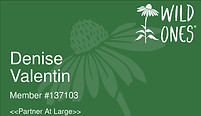top of page



Some South Florida Wetlands to Visit
Click on picture to enlarge

ARM Loxahatchee National Wildlife Refuge
Arthur R. Marshall Loxahatchee Wildlife Refuge is the only remaining portion of the Northern Everglades and has approximately 144,000 acres. You can find wet prairies, sawgrass ridges, sloughs, tree islands, cattail communities, and a 400-acre cypress swamp here. There are over 250 species of birds, raccoons, bobcats, deer, river otters, alligators, lizards, snakes, frogs, turtles and tortoises living here.

Anne Kolb/Westlake Mangroves
Anne Kolb Nature Center provides a boardwalk along the mangroves and lake where you can see both bird and aquatic wildlife. You can also rent kayaks or canoes and take a leisurely paddle around the lake. The mangroves are a great place to see fish nurseries and even mangrove crabs, along with native birds.

Big Cypress National Preserve Mangroves
Big Cypress National Preserve (U.S. National Park Service) protects over 729,000 acres of vast swamp. It contains both tropical and temperate plant communities that support marine estuaries along the Southwest Coast of Florida. It is the home of the Florida Panther.

Fern Forest
Fern Forest is a natural area that is a small portion of the Cypress Creek before the hydrology of the area was forever changed. It contains more than 30 species of ferns, and has a 2 mile boardwalk that allows you to walk through an original Cypress Swamp. You walk over a wetlands canal upon your arrival to the park.

Grassy Waters Wet Prairie
Grassy Waters Preserved is a 23 square mile wetland ecosystem that is a remnant of the Everglades system and includes wetlands, tree islands, and forested hammocks. You can see wood storks, white ibis, great blue herons, white-tailed deer, or even the endangered Snail Kite and much more. You can hike or ride bikes along the trails, or launch your own canoe or kayak and paddle around.

Green Cay Wetlands
Green Cay Wetlands is a 100-acre wetland nature preserve that includes various Florida habitats including a cabbage palm hammock, a cypress swamp, marshes, sloughs, and a tropical hardwood hammock. There are plenty of native birds, turtles, and alligators.

Loxahatchee Cypress Slough
Loxahatchee Slough is the headwaters of the Loxahatchee Wild and Scenic River. It is a 12,957-acre site that contains 9 native Florida ecosystems, including: strand and dome swamps, mesic flatwoods, wet flatwoods, mesic hammock, hydric hammock, wet prairie, and depression and slough marshes.

Loxahatcheer River at Riverbend Park
The Loxahatchee Rver Watershed contains many different habitats and is home to the manatee and other rare and endangered species. It meanders 260 miles through freshwater creeks, down into a brackish estuary, and finally empties through the Jupiter Inlet into the Atlantic Ocean. It runs through the Riverbend Park where you can kayak along the river.

Riverbend Park Cypress Swamp
Riverbend Park includes ponds, forests, cypress swamp, live oak trees. It hiking/biking trails and canoeing/kayaking trails. You can ride your bike or kayak along the river and look for native wildlife.

Tree Tops Park Marsh
Tree Tops Park includes a 23-acre restored marsh where you can walk the boardwalk and check out the turtles and fish. There is also a hardwood hammock with trails for hiking and horseback riding. The lake there also attracts native birds and other critters. Tree Tops Park is part of the old Pine Island Ridge where the Seminoles Indians used to live until the land was filled for development back in the early 1900’s.

Winding Waters
Winding Waters is a 548-acre natural area that contains mesic flatwoods, a hydric hammock, a depression marsh, a wet prairie, and a dome swamp. Birdlife is abundant with bald eagles, anhingas, green herons, belted kingfishers, wood storks, roseate spoonbills, and loggerhead shrikes making appearances.
bottom of page